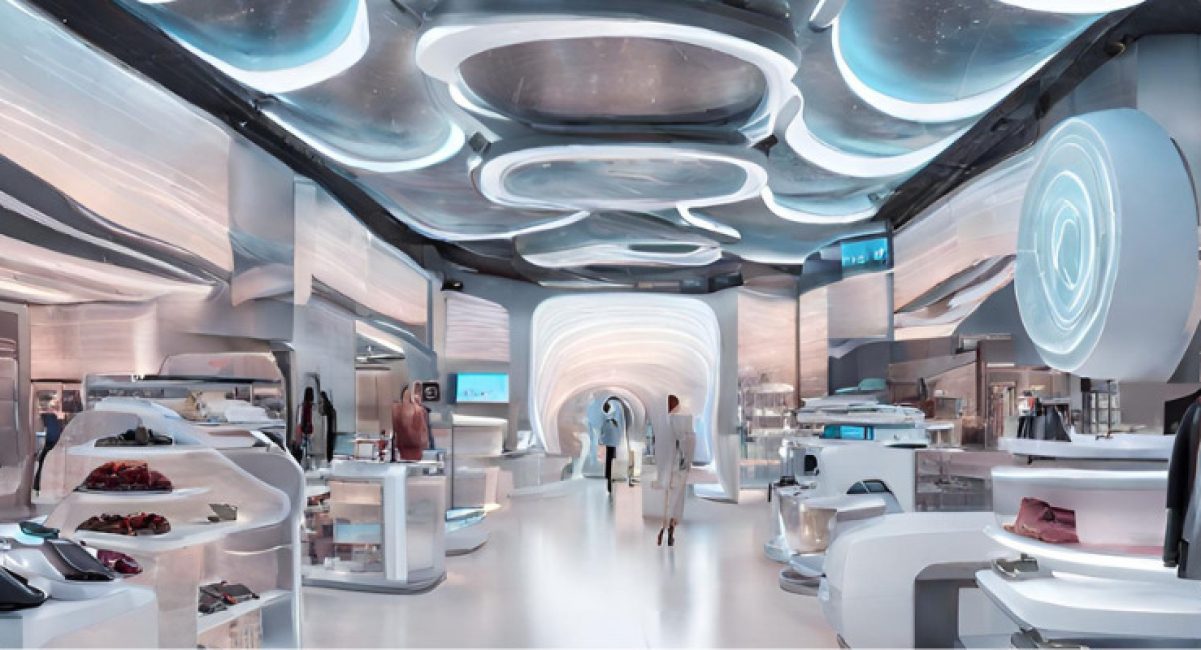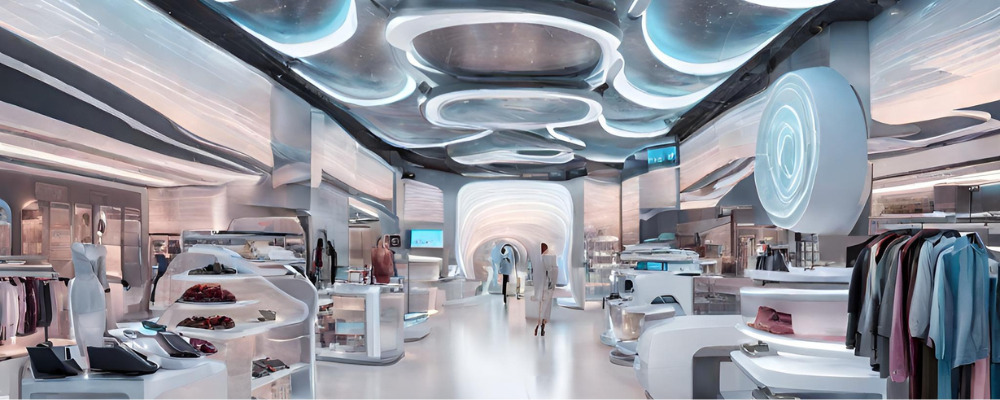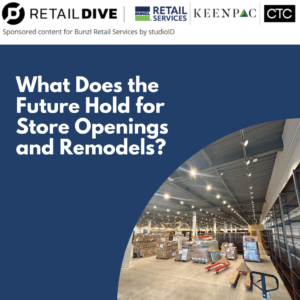Retail stores are in a period of transformation. With climate change, environmental awareness, new regulations, and evolving consumer preferences, retail stores may look very different in the next decade.
Sustainability is now top of mind for every retailer and shoppers are expecting a more seamless and convenient multichannel experience, both of which are driving large changes to the environment.
Beyond the excommunication of plastic bags, what will these changes look like? Will we still be pushing shopping carts? What will the shelves and shopping racks look like? Will we have humans behind the register, more self-checkout, or perhaps a friendly robot?
Where can we expect to see major shifts in the retail environment?
Here are some ways retail may evolve to increase sustainability and elevate the customer experience.
1. Eco-Friendly Store Designs
New retail stores will be built with sustainability in mind from top to bottom. Energy-efficient heating and lighting systems and more sustainable building materials will be important as retailers strive to reduce their environmental footprint. We will increasingly see stores with natural lighting, green roofs, and solar panels making them more energy-efficient and eco-friendly.
2. Minimalist Store Layouts
Retailers are embracing minimalist store layouts that emphasize quality over quantity. Fewer products are displayed, but each product is carefully chosen for its sustainability and durability. This approach not only reduces the environmental impact of production but also encourages consumers to make more thoughtful and sustainable purchasing decisions.
3. Digital Shelving
Retailers may opt for more intelligent shelving in the future. This could include stores that use sensors, digital displays and RFID (Radio Frequency ID) tags to track inventory, log shopping patterns, suggest cross-promotions, and more.
Some predict that we will see more holographic displays of items available to ship in additional styles and color options, or items that may be difficult to display in-store. Electronic Shelf Labels also could provide a more efficient and sustainable way to update information comprehensively across stores.
4. Increased Augmented Reality
The integration of technology is a pivotal aspect of the future of retail stores. Interactive digital displays, augmented reality (AR), and virtual reality (VR) experiences will enhance the shopping journey.
Imagine digital dressing rooms, holographic personal shoppers, and more. Customers will continue to use AR to visualize how products will fit into their homes, while the power of VR can transport them to a virtual showroom. These technologies reduce the need for physical prototypes and reduce waste.
5. Smarter Shopping Carts
In-store, traditional shopping carts may be replaced by “smart” carts, equipped with screens, navigation, weighing and scanning ability, and more. Cashier less checkouts will continue to grow, as self checkout, AI-powered computer vision and even palm scanners could become popular. Retailers will have to balance convenience with privacy concerns in navigating these decisions.
6. Evolving Sustainable Packaging
Nearly every retailer is reevaluating their packaging practices to reduce waste, and find solutions to utilize less single-use, virgin-sourced material. Many stores will allow customers to bring their own containers and bags to refill products like food, cleaning supplies, and personal care items.
This will drive loyalty as customers look to create new, more sustainable shopping habits and seek out stores that meet those needs.
Using thoughtful material will continue to be top of mind for consumers, whether it is recycled content or more durable, reusable options. Read how to develop a sustainable packaging program here.
7. Rethinking Cleaning Products
Reusable and more sustainable retail cleaning products for store associates will also evolve, with the introduction of products such as Aqua ChemPacs, which are concentrated cleaning packets that are dropped into reusable spray bottles and mixed with water. These cleaning packets save space and weight during the shipping process and also reduce the overall amount of plastic needed.
Retailers are also finding more resourceful ways to dispose of waste or turn it into something new. Companies like Safety Kleen have helped our partners dispose of retail supplies such as sanitizer or cleaning wipes, incinerating them to fuel other sources versus ending up in a landfill.
8. Growing Circular Economy Initiatives
The concept of a circular economy, where products and materials are reused, refurbished, or recycled, is gaining momentum in the retail industry. Extended Producer Responsibility (EPR) is another emerging trend as retailers are taking responsibility for the entire lifecycle of their products, offering repair services, take-back programs, and incentivizing customers to return used items. Some retailers already implementing these programs include Patagonia, IKEA, Lush and Nike.
9. Sustainable Product Sourcing
One of the most significant shifts in the future of retail will be the way products are sourced and manufactured. Retailers are increasingly committed to ethical sourcing and reducing their reliance on products that harm the environment. This means ethical retail supply sourcing from suppliers with strong sustainability practices, favoring products made from recycled or renewable materials, and reducing waste in the supply chain.
What else do you predict in the future of retail?
With so many exciting options for the future, retailers have a lot of different paths to consider. Retail sustainability certainly is a spectrum, and every organization has different goals. With convenience for the shopper and sustainability top of mind, we are excited to see what is to come.
From sustainable packaging ideas to custom displays and innovative retail cleaning products, let us know if BRS can help you with this changing retail environment.






